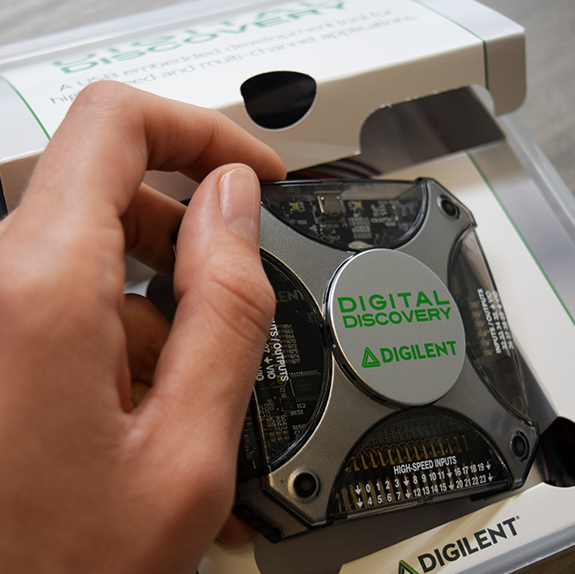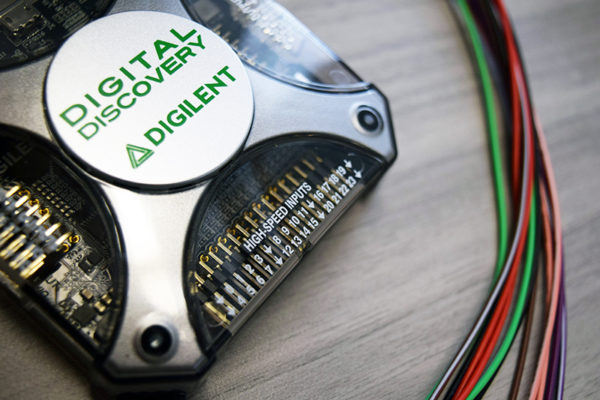The Digital Discovery, Digilent’s newest portable logic analyzer and digital pattern generator, has been involved in a number of important projects recently, with new design needs inspiring a detailed review from one DesignSpark community member. In this first look at the Digital Discovery, DesignSpark member karlwoodward provides an overview of the product as well as how his team intends to use it in upcoming projects. This provides readers with an in-depth summary of key features and tools included with the Digital Discovery, and honest feedback on their usefulness for meeting project needs.
The review begins with a brief overview of the many specifications present in the Digital Discovery, concluding:
“As can be seen in the specifications this device has a lot of potential, providing a robust test harness for many purposes and circuits.”
This is later followed by a look at the software installation and tool breakdown where karlwoodward discusses the features most important to their work. More specifically, they discusses their favorite tool, the Pattern Generator, used during project creation as their team prepares for an upcoming event based on the EDSAC computer:
“In our opinion, one of the most useful features of the Digital Discovery is the pattern generator. Allowing digital waveform generation from up to 8 I/O it can shortcut many tasks, allowing testing without committing to a microcontroller or FPGA design. We will be using this extensively for our next project. Not many devices offer such flexibility and we have been using microcontrollers for such purposes until now. Allowing us to simulate devices will shortcut much of the frustrating setup on those interoperability projects.”
The review then closes with an honest summary of the perceived value of the Digital Discovery while considering other logic analyzers currently on the market, stating:
“While there are many cheaper logic analysers out there, they are unlikely to come close to the functionality of the Digital Discovery. It has quickly become a key part of our toolkit sitting alongside the trusty oscilloscope to give us the best of both worlds. Allowing both capture and output from a single device is a great addition to our debug capabilities and will be of much use in the future.”
You can find the full review of first impressions regarding the Digital Discovery on the DesignSpark website, with tutorials to support your project needs on the Digilent Wiki. Then after reading the full review, let us know what you would use the Digital Discovery to help you accomplish in the comments below (or share your projects with us on social media)!



